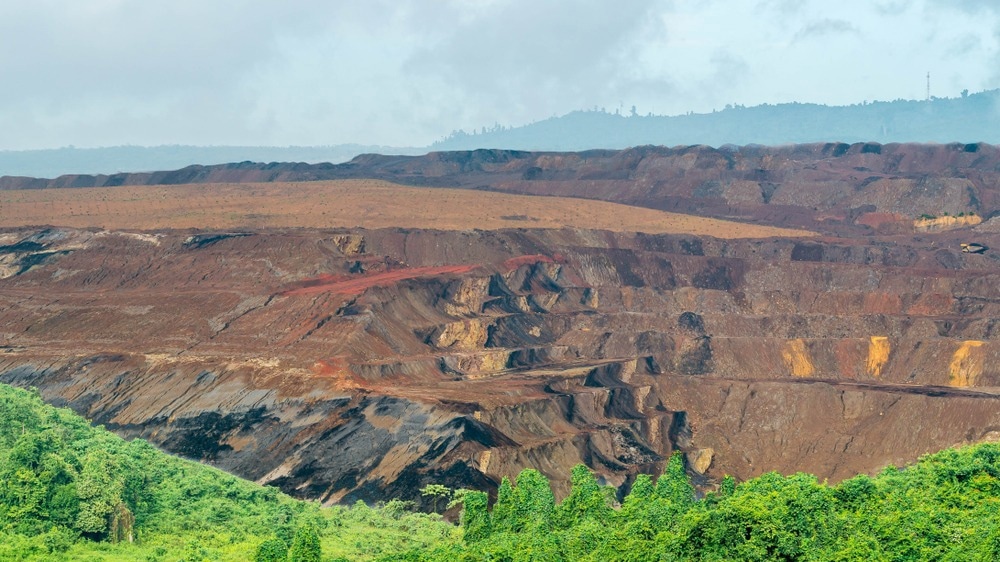In a recent article published in Atmosphere, researchers from China evaluated the carbon sink capacity in coal mining areas, specifically in Taiyuan City, China. Recognizing the significance of enhancing carbon sink capacity in mitigating climate change and addressing environmental challenges, the research aims to provide valuable insights into mining regions' carbon absorption and storage potential.

Image Credit: hilmawan nurhatmadi/Shutterstock.com
Background
Coal mining activities in regions like Shanxi Province, China, have significant environmental implications, including habitat destruction, soil degradation, and carbon emissions. The ecological disturbances caused by coal mining operations can lead to a decline in the natural carbon sink capacity of the affected areas. Understanding and quantifying the carbon sink potential in mining regions is crucial for assessing the environmental impact of coal mining activities and developing effective mitigation strategies.
Furthermore, integrating carbon sink assessments into mining area management practices can support the transition toward greener and more sustainable mining operations. By quantifying the carbon sequestration potential of different land use types, implementing reclamation strategies, and optimizing land management practices, coal mining enterprises can contribute to carbon neutrality goals and environmental conservation efforts.
The Current Study
The study conducted a detailed assessment of carbon sink capacity in a specific underground coal mine in the Wanbailin District of Taiyuan City, Shanxi Province, China. The research area covered 235.36 hectares and is characterized by varying terrain features and a temperate continental semi-arid climate with specific annual temperature and precipitation averages.
To estimate the carbon sink capacity, the research team collected extensive data on land use patterns within the mining area and relevant meteorological information. Utilizing this data, the study applied three main methods: carbon absorption, carbon storage, and net ecosystem productivity (NEP) assessments.
The carbon absorption method involved calculating the carbon absorption coefficients for different land use types in the mining area, including forest land, cultivated land, grassland, water areas, and other land categories. By multiplying the area of each land use type by its corresponding carbon absorption coefficient, the study quantified the total carbon absorption in the mining area for the year under investigation.
The carbon storage assessment utilized the Integrated Valuation of Ecosystem Services and Trade-offs (InVEST) model to estimate carbon storage in various carbon pools within the mining ecosystem. This method considered soil carbon storage, vegetation carbon storage, and other relevant carbon sinks. By multiplying the carbon density of each carbon pool by the corresponding area, the research team determined the total carbon storage in the mining area, providing insights into the distribution of carbon sinks across different components of the ecosystem.
The NEP method calculated net ecosystem productivity, representing the difference between net primary productivity (NPP) and ecosystem respiration (Rh). By assessing the NEP values for the mining area, the study evaluated the ecosystem's overall carbon sink capacity, considering the balance between carbon uptake through photosynthesis and carbon release through respiration processes.
Results and Discussion
The study's assessment of the carbon sink capacity in Taiyuan City, Shanxi Province's coal mining area, yielded valuable insights into the ecosystem's carbon absorption and storage potential. The analysis of carbon absorption coefficients for different land use types revealed varying levels of carbon sequestration across the mining area. Forest land exhibited higher carbon absorption rates than cultivated land and grassland, highlighting the importance of preserving and expanding forested areas to enhance carbon sink capacity.
Estimating carbon storage using the InVEST model provided a detailed understanding of carbon sequestration in different ecosystem components. The distribution of carbon storage across soil, vegetation, and other carbon pools indicated the significant role of soil carbon storage in maintaining the overall carbon sink capacity of the mining area. These findings underscore the importance of sustainable land management practices to preserve soil carbon stocks and enhance carbon storage potential in mining regions.
The net ecosystem productivity (NEP) assessment revealed the ecosystem's carbon balance, indicating whether the mining area acted as a carbon sink or a carbon source. Positive NEP values suggested that the ecosystem sequestered more carbon than it released, highlighting the mining area's potential as a carbon sink. By enhancing NEP through reforestation, soil conservation, and ecosystem restoration, coal mining enterprises can effectively increase carbon sequestration and contribute to climate change mitigation efforts.
Conclusion
In conclusion, the study provides valuable insights into the carbon sink capacity of coal mining areas in Taiyuan City, China. By estimating carbon absorption and storage using innovative methodologies and models, the research contributes to the broader understanding of carbon sequestration potential in mining regions. The findings underscore the importance of sustainable land management practices and ecosystem conservation to enhance carbon sink capacity and mitigate climate change impacts in coal mining areas.
Source:
Chen F., Liu Y., et al. (2024). Assessing Carbon Sink Capacity in Coal Mining Areas: A Case Study from Taiyuan City, China. Atmosphere, 15, 765. DOI: 10.3390/atmos15070765, https://www.mdpi.com/2073-4433/15/7/765